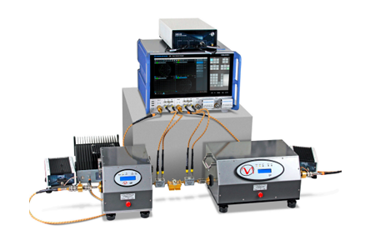Maximizing Power Amplifier Efficiency With Harmonic Load Pull Measurements

Modern RF power amplifier (PA) designs demand high efficiency, especially when operating in nonlinear regions near saturation where significant harmonic power is generated. Harmonic load pull measurements offer a critical solution by optimizing impedance at harmonic frequencies to improve PA efficiency, particularly in advanced amplifier classes like Class F and J. These techniques go beyond traditional load pull methods, introducing sophisticated waveform engineering and impedance tuning across fundamental and harmonic frequencies.
Rohde & Schwarz, in collaboration with Maury Microwave and AMCAD Engineering, provides a turnkey harmonic load pull solution built around the R&S®ZNA vector network analyzer. This compact system integrates four synchronized signal sources that can simultaneously manage the fundamental frequency and second and third harmonics. It allows a step-by-step impedance sweep at each harmonic level, helping designers pinpoint optimal efficiency and linearity conditions for the device under test (DUT). Efficiency improvements in the 10–20% range are possible depending on device characteristics and mode.
The system supports both passive and active tuning methods or a hybrid combination. Passive tuners manage high-power signals effectively, while active feedback systems provide precise harmonic control without mechanical losses. This hybrid flexibility is crucial for robust testing of modern PAs used in wireless communication systems.
Ultimately, this approach helps RF engineers improve PA efficiency, reduce power consumption, and develop more competitive products by fine-tuning performance through detailed harmonic load pull analysis, saving time and cost in the development cycle. The solution is ideal for evaluating PAs under real-world harmonic loading conditions in both research and production environments.
Get unlimited access to:
Enter your credentials below to log in. Not yet a member of RF Globalnet? Subscribe today.
